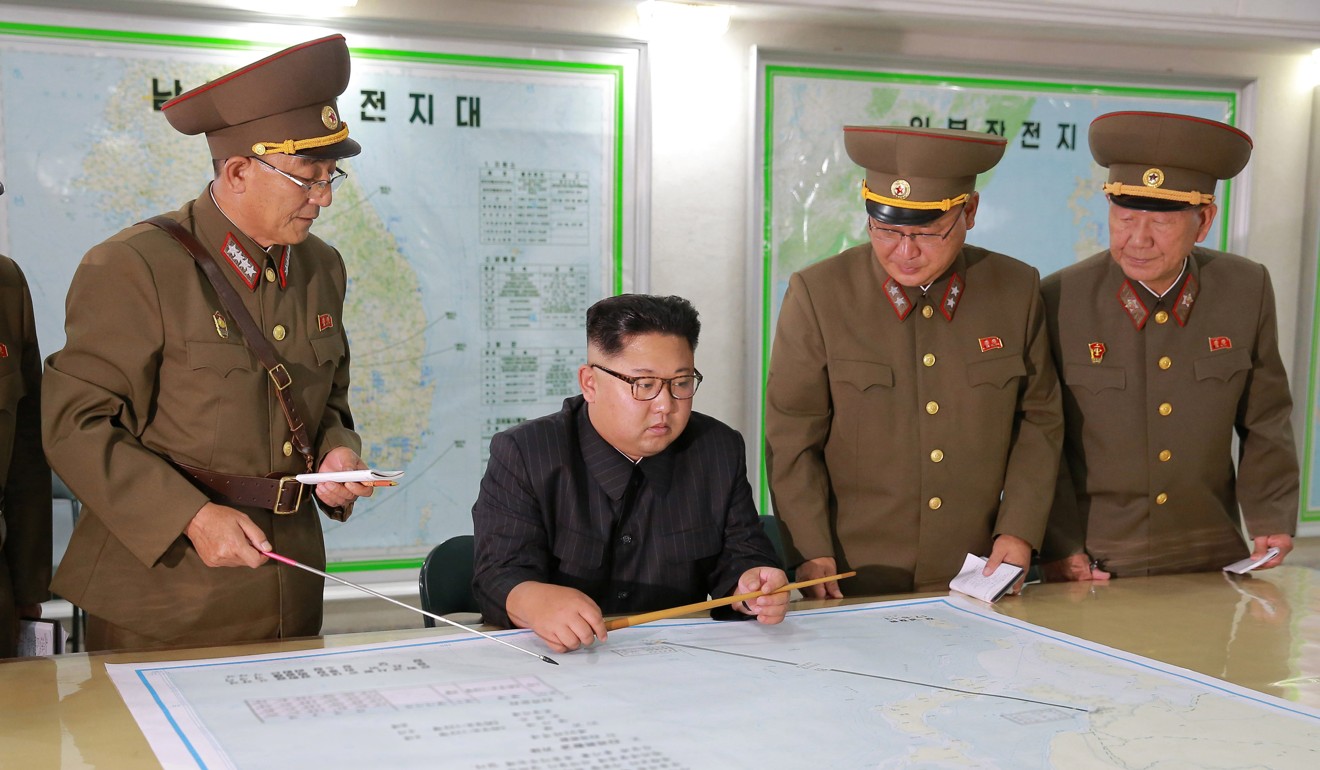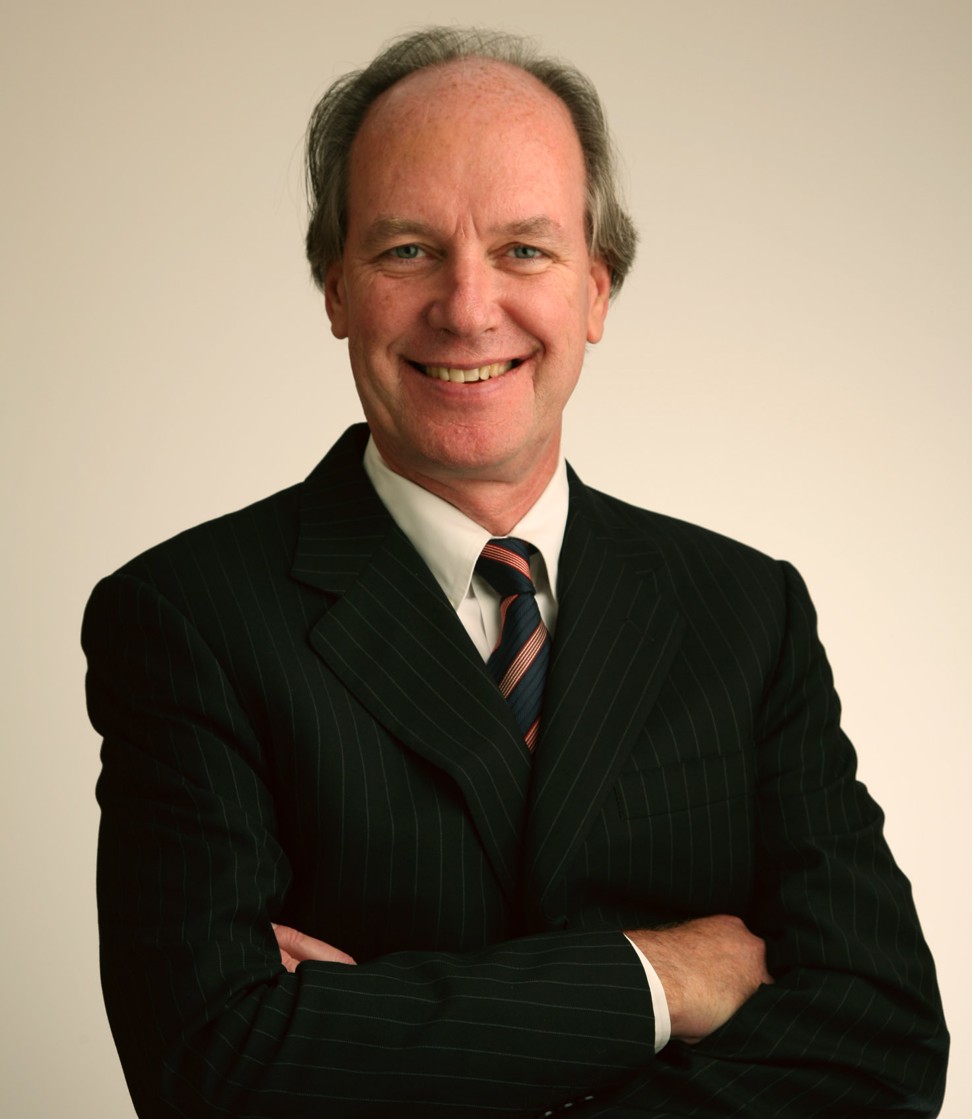
US-South Korea alliance ‘strong’ despite Washington’s mixed messages, Korea Society president says
Korea Society President Thomas Byrne tells the Post that Kim Jong-un sees nuclear weapons as ‘the ultimate guarantor of the legitimacy of the regime’
Following a week of conflicting messages from the administration of US President Donald Trump about North Korea’s nuclear weapons programme, Korea Society President Thomas Byrne commented on the relationship between Washington and Seoul. Speaking to the South China Morning Post at the Korea Society’s New York headquarters, Byrne also addressed the response to China’s call for an end to US-South Korea joint military exercises and the reasons behind the failure of market reforms in North Korea. The Korea Society is a non-profit organisation dedicated to promoting greater “awareness, understanding and cooperation between the people of the US and Korea”.
Byrne said the North Korean leadership thinks developing nuclear weapons “is the ultimate guarantor of the legitimacy of the regime”.
What should we make of concerns that mixed signals from Washington about its approach to military threats from North Korea signal wavering US military support?
The fundamental message has been consistent since the Obama administration into the Trump administration. The chairman of the JCOS’s (US Joint Chiefs of Staff’s) visit to Asia shows that the alliance is strong. We have a national interest in peace and security on the Korean Peninsula and we’ll maintain a robust alliance with Korea and Japan. That’s key because deterrence is crucial. North Korea would like to see a wedge driven between the ROK and the US and a weakening of the alliance. Having a robust alliance is something that, historically, every government in South Korea and the US has upheld. That’s certainly the case now with the Moon Jae-in government and with Trump, and it was the case with Obama and Park Geun-hye. It was the case with Roh Moo-hyun, despite a bout of anti-Americanism at the beginning of his term, and George W. Bush.
What are the chances that China’s “suspension-for-suspension” proposal, whereby the US and South Korea halt their joint military exercises, will be accepted?
It’s important to recognise that the Moon government and the Trump government are all on the same page on the importance of the joint military exercises. The Chinese proposal that was reiterated when they made their statement in the August 5 Security Council sanctions that China would like to see suspension for suspension is a non-starter. [President Moon] said when he visited the US in June that the alliance and the military drills that maintain the alliance are legitimate. They’re self-defence.
The US troops have been in South Korea for 64 years to uphold the armistice agreement to prevent hostilities from taking place. President Moon noted that the ROK and US should not be asked to trade a legitimate exercise in self-defence for a freeze on illicit activities that the international community and UN Security Council have condemned. The other problem with the suspension for suspension is that no one really knows what North Korea’s [missile] fuel cycle is and no one really knows what its enrichment capabilities are.
That’s in contrast to Iran where the permanent members of the UN Security Council and Germany (P5+1) had enough confidence in their intelligence to enter into an agreement. Their assessment was that what Iran declared is probably what they have. That’s not the case with North Korea. So what North Korea has declared is probably just a piece of what they have in terms of their nuclear weapons programme.

Short of missile strikes, what’s the biggest problem in terms of the risk of an escalation in military activity?
One of the risks now is that there’s no communication between North Korea and South Korea. The military hotline doesn’t get answered. When Moon Jae-in made a proposal for humanitarian exchanges, they did this by broadcasting the message through loudspeakers. If there’s ever a military incident like the mine that went off in 2015, even if it’s accidental, and the South Koreans think it’s coming from North Korea, South Korea now has a policy of proportional retaliation, and there’s no way to have some communication to try to prevent upward spiralling and retaliation.
It does look like Kim Jong-un is taking a much harder line. Maybe the line always was hard, but on the surface it looked like North Korea was willing to engage diplomatically under Kim Jong-un’s father, Kim Jong-il. Now North Korea refuses to rejoin the six-party talks process that it walked away from in 2009; it’s hard to see any evidence that diplomacy in the absence of the joint ROK and US policy of maximum pressure will work under Kim Jong-un.

Why hasn’t North Korea followed China’s path of reform and opening up?
When China announced its opening and reform policy at the end of 1978, it was pretty remarkable because it was only two years after Mao Zedong’s death. It happened very quickly because reform had strong political proponents led by Deng Xiaoping who opened the economy to foreign investment and allowed provinces and regional special economic zones freedom to experiment. There was a decentralisation of authority and farmers and businessmen gained a fair degree of autonomy from the state. Chinese corporate and banking laws were implemented that incorporated Western capitalist features. So you had the institutional changes that took place pretty much right after the opening and reform and took about a decade and a half to advance more fully.
There’s none of this type of systematic reform taking place in North Korea. Nor is the investment regime open and friendly to foreigners. We saw that in the confiscation of the profits of Egyptian telecommunications company Orascom, once the largest investor in North Korea. North Korea is basically at the historical stage that China was in the Mao era.
It is not realistic to expect that Kim Jong-un would pull off what Deng Xiaoping did in 1978. North Korea maintains a military-first policy. The boom in trade with China over the past decade has produced a veneer of prosperity in Pyongyang, but the economy remains fundamentally unreformed and underdeveloped, and vulnerable to boom-bust cycles.
Is this why the inter-Korean Kaesong industrial park has closed?
When the South Korean government in effect closed the zone in early 2016 after North Korea’s fourth nuclear test, the zone employed some 50,000 North Korea workers. However, the Hyundai Asan, the zone developer, had envisaged that after a decade 350,000 workers would be employed by 2012. That zone was supposed to expand several-fold, I think almost 10-fold. It was supposed to be a real industrial city and it never worked out. I visited many industrial zones in China and throughout Southeast Asia. Kaesong was completely different from all the others in that there were no linkages with the [North Korean] economy other than the workers who were there. The hard currency paid by the South Korean companies operated in the zone went to the government, not the workers. The inputs for the products manufactured there came from South Korea and then the final products were shipped back to South Korea. There were no management training programmes for North Korean managers.
There was no managerial integration as was the case in, for example, in the Philippine and Chinese industrial zones, locally owned companies set up in the zones to supply the international companies. There was an intention in Kaesong to invite foreign firms, Chinese firms, to operate there and internationalise it. That did not happen, despite the South Koreans’ eagerness to expand. The problem was that the North Koreans looked upon this as a Trojan horse, a gift from South Korean capitalists. If it got too big it would spiral out of Pyongyang’s control. It would create wealthy and powerful individuals potentially challenging the primacy of the Kim dynastic leadership and generate centrifugal market forces that would overwhelm the state’s stranglehold on the economy.



